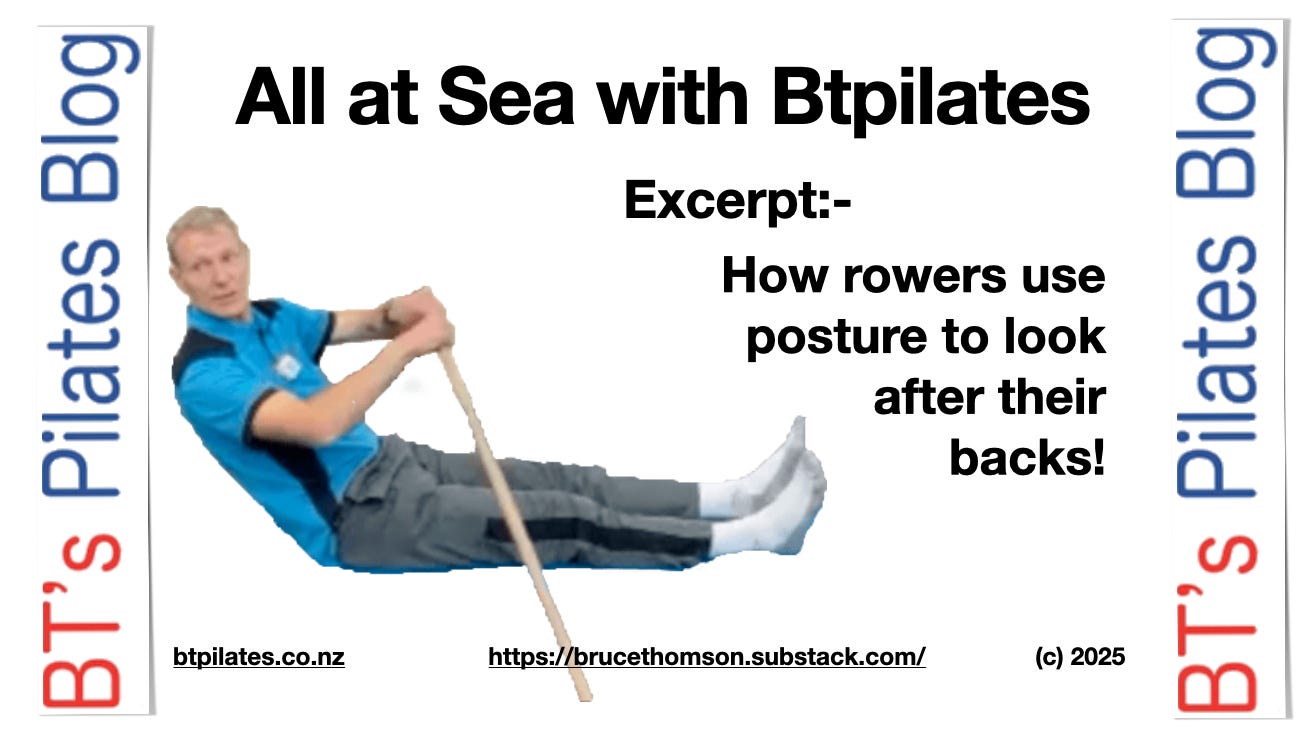How rowers use posture to look after their backs.
10-minute video of spine stretch forward adapted to become a rowing exercise; notes on current rowing and back pain research; and a summary of professional advice on rowing technique
Video
Video content:
Spine stretch forward variations
“take five, or is it six?”
“row with an oar”
“Row with an oar and a rowlock”
B beach ball hamstring stretch
The saw variations
"semaphore" Saw,
"straight arm" Saw
“Swallow dive” Saw
Back injury avoidance for rowers
40% of competitive rowers will experience back pain in a 12-month period, and this number can be as high as 60% in adolescents. That's four to six times higher than in the general population.
Pilates instructor and coaching pointers for rowers
To keep your rowing safe for your back, you need three cross-training add-ons:-
Pilates mat class that includes stretching self-massage and postural awareness,
Weight and strength training at the gym
Cycling
10 Pointers for back free rowing
1. Improve and use flexibility in the knees, hips, and upper spine.
If these move more, the lower spinal joints can move less, reducing the risk of disc prolapse—90% of disc injuries occur in these lower two joints.
2. Maintain a tall and relaxed posture
(be proud! - don't slump down)
3. Be aware of where a disc prolapse will likely happen
(i.e. the lowest two spinal joints just above the sacrum), and:-
transfer the movement into the upper spine (the bit that's got ribs attached to it),
without loosing fluid movement, keep your hips a little more upright and your lower back straight a little more straight (if you sit tall relaxed at all times, your hips will not rock back).
4. Don't do more than 7 hours of rowing training per week.
If doing more, top it up with cycling. If you break this rule, research shows that you will suffer. Your coach will advise how you can “break’ this rule of thumb, e.g. an experienced rower will do more hours of gentle rowing out of season, and reduced hours (but more intense), during the rowing season.
5. Build training load incrementally
6. Never use a rowing machine for longer than 30 minutes at a time
(you are better off mixing dry land rowing with cycling)
7. Never do squats after rowing
After a rowing, workout the jelly in your disc will to some degree be pushed backward and this makes you vulnerable to disc prolapse (picture C in graphic above). Walk, stand, and do McKenzie extenstion instead (see below).
8. If possible, use a modern dynamic ergometer-style rowing machine such as the RP3— research has shown these to likely be safer.
9. Do Mckenzie extension on elbows after a rowing workout
After exercise, McKenzie extension exercise can help restore intervertebral disc alignment and stretch out tight and sore tummy muscles. For most rowers, this is your go to warm down stretch (what ever else you do, make sure you do this!)
The picture’s source page show a series of graded extension exercises, and is worth a visit.
10. Always sit tall when you sit at a desk or when watching TV
If you do back strength work at the gym and Pilates and back massage at the Pilates studio, your back muscles will develop the postural stamina for you to naturally sit tall and relaxed, and you will scarcely hardly ahve to think about it!







